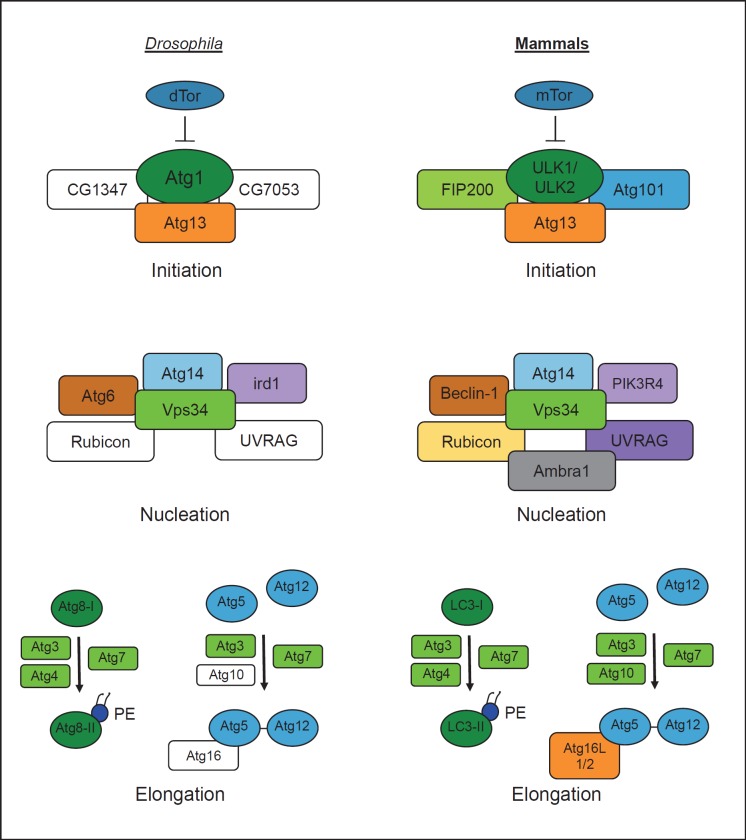Fig. 1.
Comparison of autophagy pathways in Drosophila and mammals. In both flies and mammals, autophagy proceeds through three defined stages that depend on a number of conserved genes comprising the core autophagic machinery. Autophagy is regulated by the nutrient signaling pathway, in which the kinase TOR normally inhibits autophagy under nutrient-rich conditions. Autophagy initiation involves a multiprotein complex containing Atg13 and the serine/threonine kinase Atg1, which activates formation of the pre-autophagosomal membrane. Nucleation of the pre-autophagosomal membrane is mediated by a complex that contains the type III PI3K Vps34. Elongation of the membrane proceeds through two ubiquitin-like conjugation steps. Atg8 (LC3) acquires a phosphatidylethanolamine group to form Atg8-II (LC3-II), which is incorporated into the nascent autophagosomal membrane and helps recruit substrates for degradation. In the second reaction, Atg5 is conjugated to Atg12, which then associates with Atg16. Genes that have not been validated in autophagy in Drosophila are depicted as white boxes.

